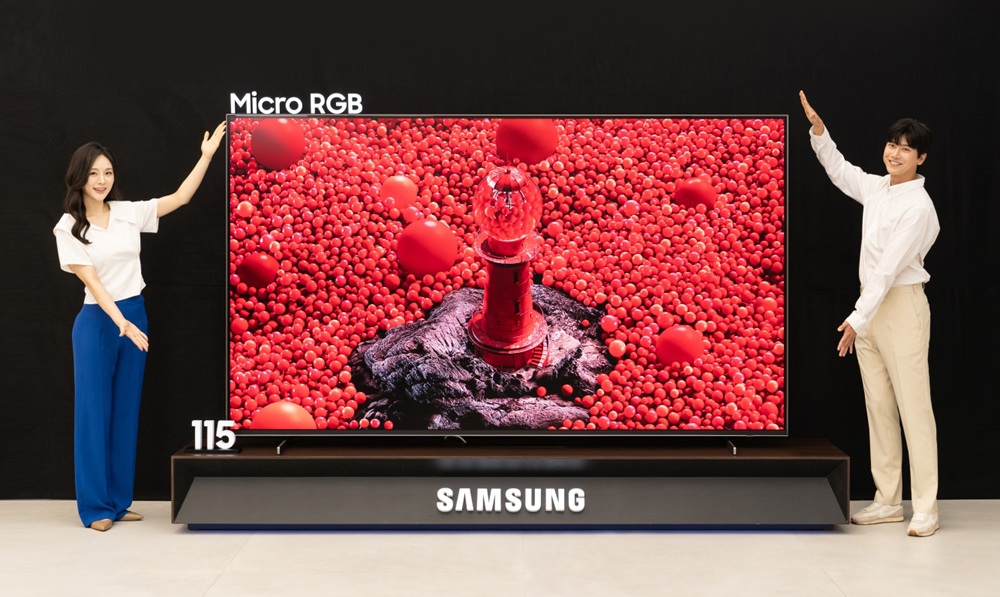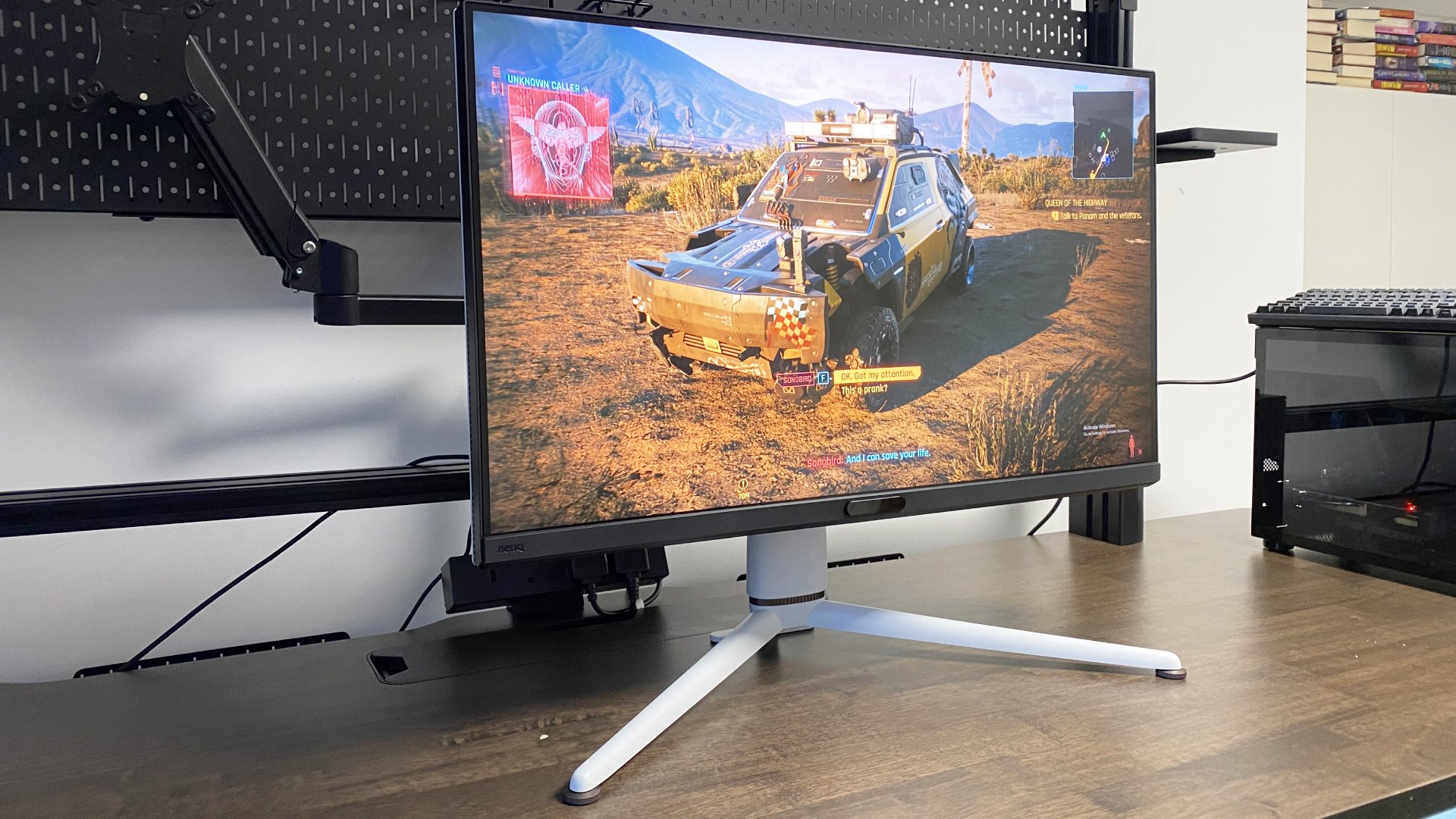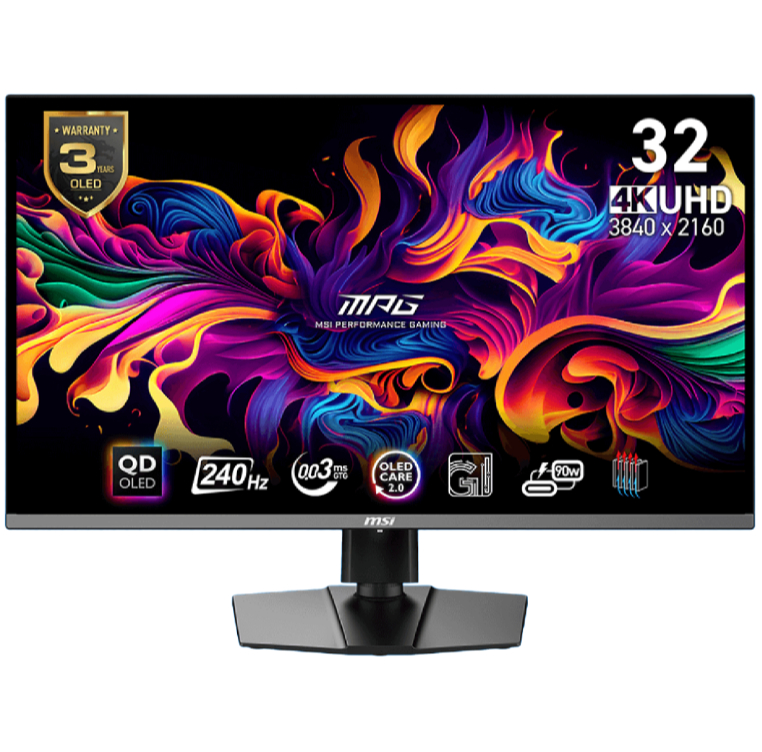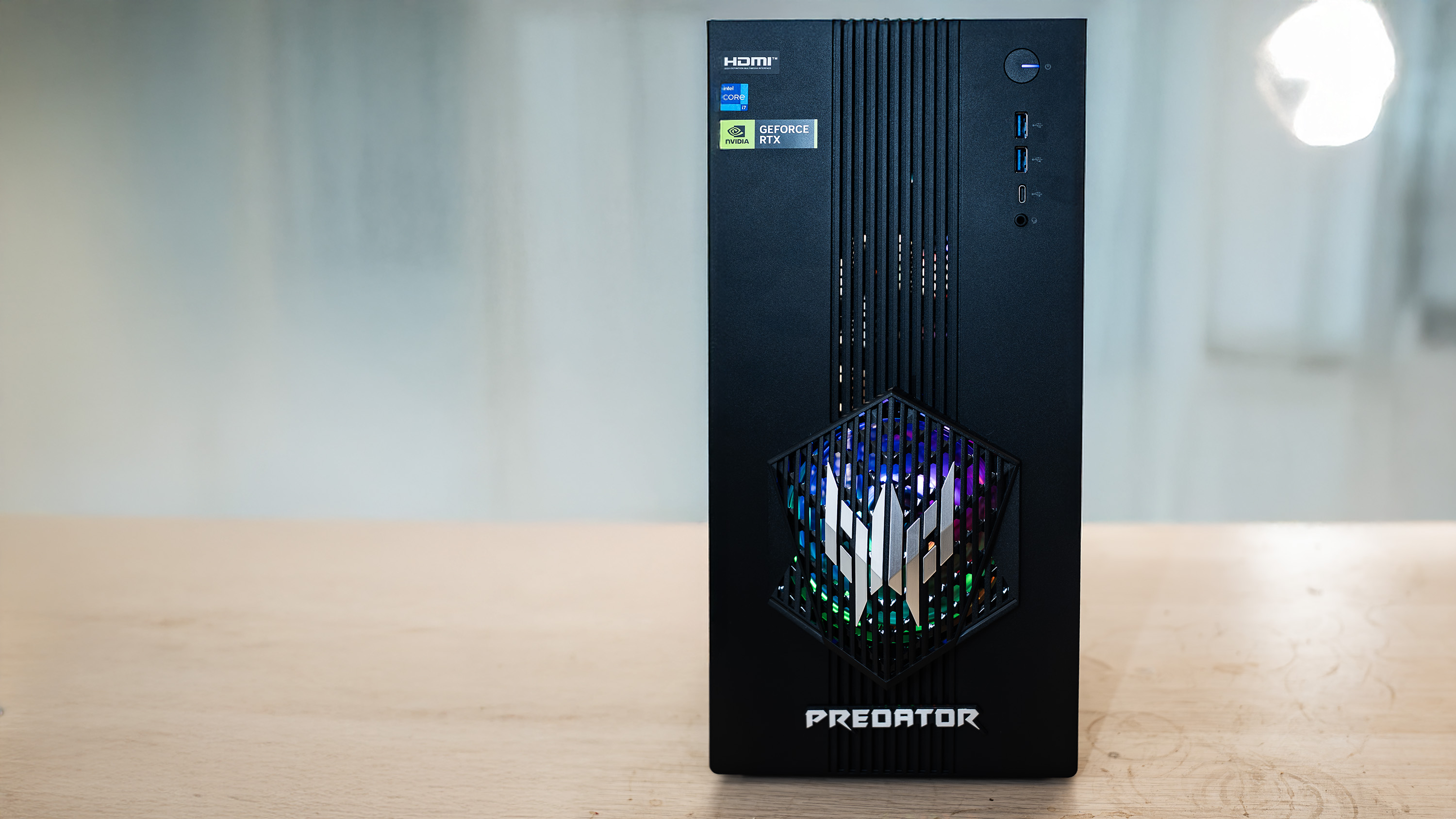Samsung's new Micro RGB tech is confusingly still an LCD panel with a backlight, but it could have the most precise local dimming yet
Micro RGB, not microLED, um-kay?

You know the whole LED TV or PC monitor thing and how misleading it is on account of the "LED" bit being just a big, dumb backlight for an LCD panel? Well, it's kinda happening again with Samsung's new Micro RGB tech, except it's a bit better and a bit worse than you might expect, all at the same time.
So, Samsung has announced its first Micro RGB TV, a 115-inch model. The company first mooted this technology at CES in prototype form, but now we're getting an actual TV, though Samsung hasn't named the precise model number as yet.
Anyway, what the super-sized Korean conglomerate is doing here is both old and new. The old bit is that this panel is still an LCD with a backlight. It's not an OLED panel and nor, importantly, is it like microLED. The latter uses individual and very small—hence "micro"—LEDs to create each pixel on the display. And it's super expensive and only available for very large displays right now.
For Micro RGB, the pixels are still in a conventional LCD panel and the "Micro RGB" bit is in the backlight. Compared to existing LCD gaming monitors with, say, mini-LED local dimming like the BenQ MOBIUZ EX321UX, the new stuff is twofold. First, instead of using white LEDs to light up an LCD panel which in turn has RGB subpixels, this Micro RGB backlight has lots of RGB LEDs, each of which can be controlled separately.
In other words, if you want a part of the LCD panel to show the colour blue, not only can you use the RGB subpixels in the LCD itself to achieve that, you can backlight them with blue light in the first place. In theory, this should make for far better colour fidelity. In practice it's a bit more complicated than that, more on which in a moment.
The other difference is the number of lighting zones. Unfortunately, Samsung isn't quoting a figure. But Samsung has said the zone count is roughly three times higher than a mini-LED TV with local dimming.
Currently, such displays tend to max out at around 2,000 zones. So, this Micro RGB panel could have as many as 6,000 individually controllable dimming zones. If that sounds impressive, the problem is the number of actual pixels.
Keep up to date with the most important stories and the best deals, as picked by the PC Gamer team.
A 4K display, for instance, has over eight million pixels. That would mean roughly 1,400 pixels being backlit by each zone. However, Samsung's first Micro RGB panel is actually, 8K, which means over 5,500 pixels per zone.
The problem that creates goes something like this. Let's say you just want the whole screen to be blue. No problem, light the Micro RGB backlight up in blue. But what if you're rendering a mostly blue object with a few bright red details? And what if those details is much smaller than each of the display's dimming zones?

Bottom line, you'll have to make some kind of compromise with the backlighting. Indeed, local dimming for LCD panels has always been about compromises, so that hasn't changed. With more zones, you'll certainly get more precision. And then there's the potential for more vivid colours when the RGB aspect of the backlight can be fully utilised.
What this new display tech definitely can't do, however, is match the perfect per-pixel lighting control of OLED and, indeed, the microLED tech that sounds so similar.
Anyway, I wouldn't be surprised to see this technology appear in PC monitors fairly soon. I doubt it will radically change the PC gaming monitor landscape. It will probably allow for some incredible looking brightness and colour coverage specs. But the limitations of a monitor with a backlight resolution that's far lower than the LCD panel itself will remain. The "Micro RGB" branding certainly sets up expectations that the technology won't be able to meet, and that's not terribly welcome.
In the end, brighter OLED panels still seem like the best solution in the medium term when it comes to lighting control, contrast and HDR performance. But maybe these Micro RGB panels will offer an interesting value-orientated alternative. We'll see!

1. Best overall:
MSI MPG 321URX
2. Best 4K:
LG Ultragear 27GR93U
3. Best budget 4K:
Gigabyte M28U
4. Best 1440p:
Xiaomi G Pro 27i
5. Best budget 1440p:
Pixio PXC277 Advanced
6. Best budget 1080p:
AOC Gaming C27G4ZXE
7. Best Ultrawide:
Asus ROG Swift OLED PG34WCDM
8. Best 32:9:
Samsung Odyssey OLED G9
9. Best budget ultrawide:
ASRock Phantom PG34WQ15R2B
10. Best WOLED:
LG Ultragear 32GS95UE
11. Best 1440p OLED:
MSI MPG 271QRX
12. Best budget OLED ultrawide:
Alienware 34 QD-OLED
13. Best dual-mode:
Alienware AW2725QF

Jeremy has been writing about technology and PCs since the 90nm Netburst era (Google it!) and enjoys nothing more than a serious dissertation on the finer points of monitor input lag and overshoot followed by a forensic examination of advanced lithography. Or maybe he just likes machines that go “ping!” He also has a thing for tennis and cars.
You must confirm your public display name before commenting
Please logout and then login again, you will then be prompted to enter your display name.

